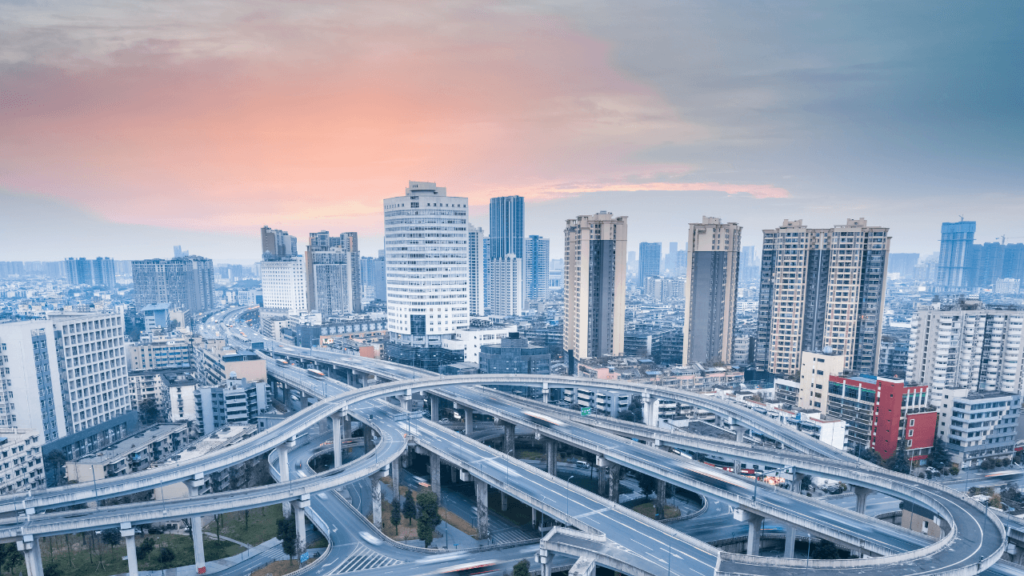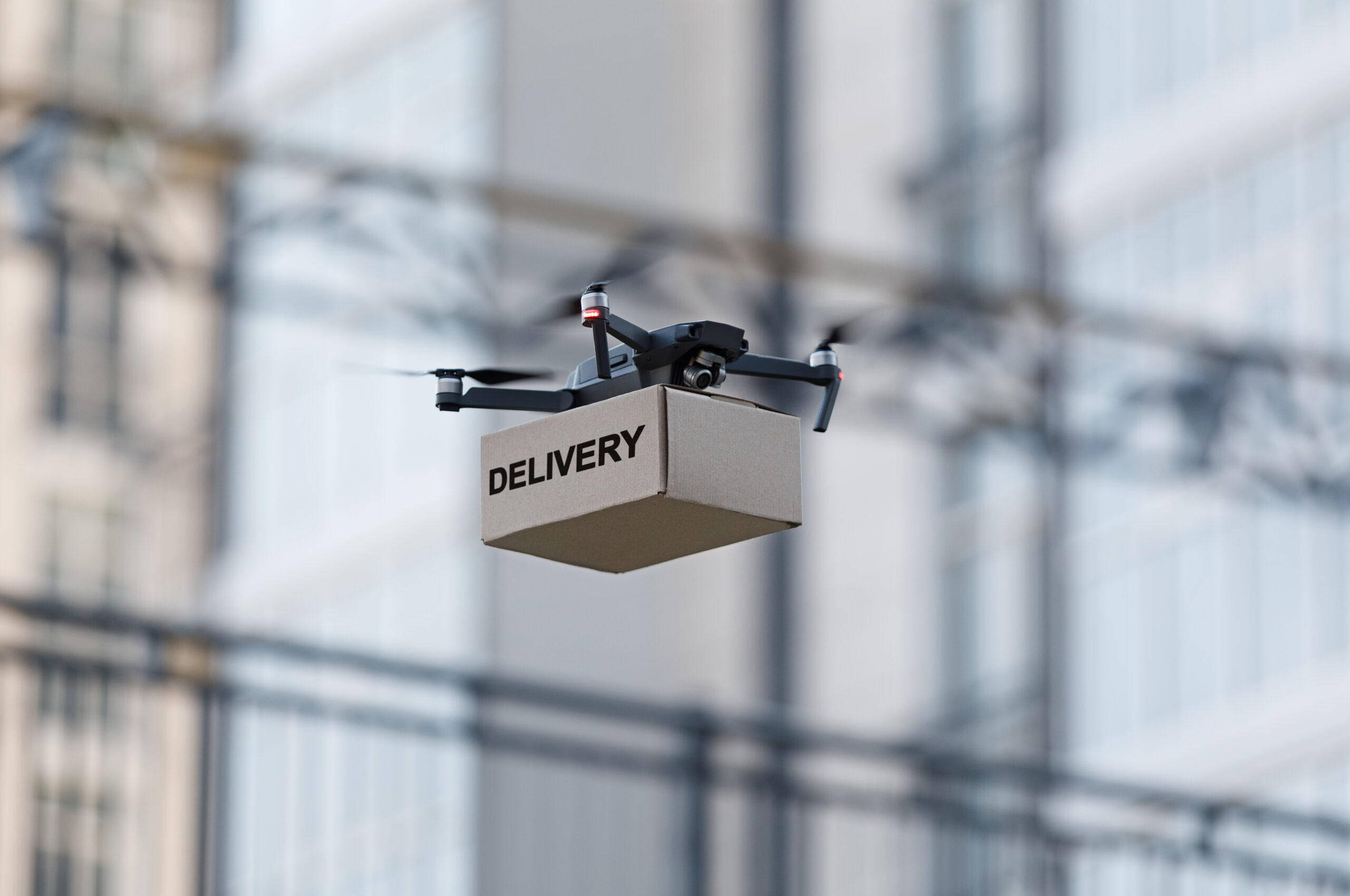The UK’s transport sector is going through a period of rapid change.
Net-zero targets, changing consumer habits, and increased automation, digitisation & connectivity, all bring challenges and opportunities across the sector.
Innovate UK, which is the United Kingdom’s innovation agency, has this month launched a new report UK Transport Vision 2050, which looks at the future of the transport system in the UK.
This in-depth study looks at the changes, challenges and opportunities for the UK’s transport sector, setting out a vision of what the UK transport system may look like over the next 30 years, and outlining the steps required to achieve that vision.
The report sheds light on some of the ways – both financial and societal – we can make the most of these opportunities.
From economic growth to environmental benefits, to more efficient ways to deliver goods, forward-thinking businesses need to be ready to anticipate and take advantage of innovations as we move towards 2050.
“Transport is fundamental to the daily movement, trade and communication of people, organisations and goods across the globe. Transportation and transport manufacturing generated over £109 billion added value for the UK in 2019, 5.5% of the total UK output. Transport also accounted for 27% of the UK’s Greenhouse Gas emissions in 2019… The importance of transport means the UK must respond to the challenges and opportunities represented”
Executive summary
The vision for UK transport 2050
The report envisions the UK transport system being recognised as a world leader in design, innovation, manufacturing and deployment by 2050.
It envisions a transport system that enables the movement of people and goods from one location to another, through accessible, connected, cost-effective, net-zero, reliable, safe and seamless means.
It also envisions the transport system providing high-quality skilled employment as a major contributor to UK GDP.
Key factors in the UK transport 2050 vision include:
Meeting societal & transport user needs
By 2050, people travelling in the UK will “experience a connected, cost-effective, accessible and reliable transport system”, which is integrated, energy-efficient, safe, affordable and sustainable.
Freight distribution will also be more efficient and competitive.
Seamless transition of people and goods
The UK transport system of 2050 will be fully integrated, in order to provide sustainable, interconnected movement of goods and people – regardless of the methods or modes of transport – both within the UK and overseas to and from the UK.
Transport, energy and infrastructure will be optimised to deliver the best system.
Net-zero emissions
Nearly all UK transport will produce zero emissions at the point of use in 2050, and any emissions that are produced will be offset.
Equally, emissions from transport manufacturing will be zero or offset, with raw materials sourced sustainably, and products designed to prioritise resource efficiency, remanufacture and
recycling to create a circular economy.
Safe, secure & resilient
Systems will be in place to protect travellers and other users, reducing deaths and serious injuries from transport-related incidents to near-zero in 2050.
Technology will be available when incidents do occur to redirect traffic and provide real-time information to both travellers and incident-response teams.
Economic contribution
In 2050, the UK will be an attractive place to travel to or do business, with a world-leading, reliable and cost effective transport system which “drives economic growth, exports and (new) jobs”, underpinned by research and development, manufacturing and delivery of transport systems, infrastructure, and resilient and secure supply chains.
The pathways to UK transport 2050
The report identifies six key areas with steps, or pathways, to achieve the 2050 vision, based on a wide-ranging review, referenced sources, assumptions based on sector knowledge, and input from stakeholders.
Travel and transport demand
Consumer behaviour and demand will undoubtedly change and evolve over the next 30 years, and this evolution will only be accelerated by technological advances. Understanding the impacts of innovation – and implementing smart policies and interventions – will be key to an optimised transport system of the future.
Total road traffic is forecast to grow by between 17% and 51% between 2015 and 2050.
Rising online sales (27.9% of all retail sales in 2020, up from 19.2% in 2019) means demand for LCVs is high. The trend towards online sales looks set to continue, with government forecasts predicting LCV traffic growth of up to 108% by 2050. Disruptive last-mile delivery modes like drones, though, may remove some LCVs from UK roads by 2040.
HGV distance is expected to increase by 2-4% by 2030, with high levels of autonomy potentially leading to an increase of up to 12%.
Truck and HGV movements will be focused on highways and the strategic road network. Operational improvements aim to reduce noise and emissions.
Connectivity
Improvements in communications and connectivity will enable efficiency improvements for all road users.
Transport systems and vehicles will be connected via cellular and satellite communications technology, opening the way for significant efficiency gains and new business models and services.
Secure connectivity, enabled by widespread 4G connectivity by 2025, 5G by 2030, and 7G by 2050, will be critical to the operation of transport as national infrastructure. 7G will connect road vehicles with each other, enabling a sophisticated central traffic management system.
By 2050, 60% of new vehicles are expected to offer personalisation for occupants, and 75% to have intelligent decision-making capabilities, with the ability to cooperate with other nearby vehicles to support traffic flow and safety.
Improved connectivity will also give operators access to real-time data that will improve the planning of road usage and lead to efficiencies, cost savings and emissions reductions.
Freight movement will be optimised at ports and depots to ensure maximum efficiency in time, miles travelled and space.
Energy vectors
The target of net-zero carbon emissions by 2050 necessitates a complete shift away from fossil fuels to sustainably produced electricity, hydrogen and other alternatives, as well as a move to supply chains producing new powertrains.
By 2030, liquid fuel (including hydrogen, biofuels and fossil fuels) will still be widely used, with most vehicles on the road (66% of cars & vans and 85% of HGVs and buses) using either traditional or hybrid internal combustion engines.
Between 2030 and 2050, there will be a major shift to alternative powertrains, with electric as the dominant energy vector for road transport.
By 2050, it is expected that 99% of cars & vans, and 50% of buses & HGVs will be powered by electricity, and 50% of buses and HGVs will be powered by hydrogen.
Autonomy
Automation will make road vehicles smarter, and create the opportunity for new services, like last-mile delivery via drone.
Automation is already revolutionising the transport sector, reducing costs, improving safety, and performing dull, dirty or dangerous human tasks. Autonomy will continue to play an increasing part in the UK’s transport sector over the next 30 years.
Vehicles may be able to operate in driverless mode as soon as 2030, with automated buses and minibuses undergoing trials by 2025, and real-world trials of The UK Heavy Goods Vehicle Platooning (HELM) scheduled to complete in 2022.
The use of automated goods vehicles is predicted to begin in depots and motorway platoons before becoming more widespread.
Business models
Advances in digital technologies and government policies could transform transport business models.
Online retail and associated home deliveries are predicted to increase over 60% by 2030 – and the final mile accounts for around 40% of overall logistics costs. Today’s consumers demand faster, more reliable and more convenient services, which will only continue into the future. It is predicted that operators will continue to increase the offering of timed, same-day and other traceable services.
Operators will find ways to minimise costs and maximise revenue with creative approaches like:
- Bundling services into a one-stop contract
- Maximising the use of assets at times of low demand (such as using idle vehicles to transport goods
- Mass customisation.
Logistics businesses will likely automate shared storage & distribution systems, increase levels of connectivity, and even increase the use of commercial drones.
Infrastructure
It is expected that UK transport’s consumption of petroleum products will fall by over 90% by
2050 – to be replaced by electricity, hydrogen, ammonia and other sustainable fuels.
To fulfil these demands, the UK will need an estimated 280,000 additional road charge points by 2030.
The move to sustainable fuel sources will require “significant and rapid development of zero-carbon production and distribution on a national scale”, with international cooperation.
The vision and pathways laid out in the UK Transport Vision 2050 report highlight a number of major new opportunities, both for economic growth and for societal benefit, showing how businesses must adapt and evolve in order to secure market position and grow.
Schedule a demo of Stream today, to learn more about a future-ready logistics and transport management software system with intelligent route planning & route optimisation, electronic proof of delivery & collection, powerful analytics & reporting, and many more features – all enabled for electric vehicle routing.
About Innovate UK and the UK Transport Vision 2050
Part of the UK Research and Innovation (a non-departmental public body funded by a grant-in-aid from the UK government), Innovate UK is the UK’s innovation agency.
The report sets out the changes, challenges and opportunities of the UK’s transport system over the next 30 years, to 2050. With the aim of gathering together UK government and industry around a single vision.
The report also aims to inform how we all invest in the future of transport as an interconnected system that delivers for people and places. Innovate UK is seeking feedback to help refine and improve the vision.






